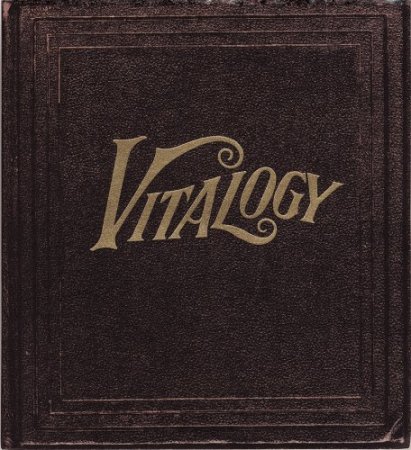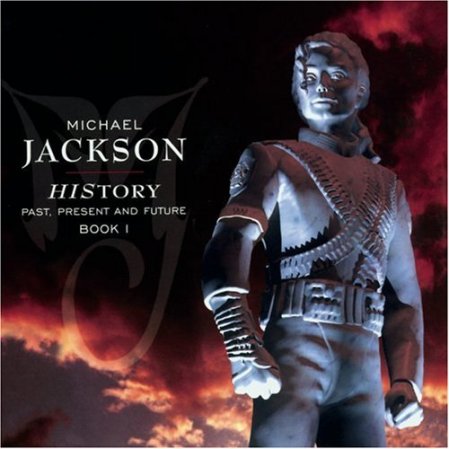I recently ran across my notes for a presentation to the Sony Music National Distribution and Field Staff, when I was SVP of Marketing and Sales. It recaps the marketing tools we created in 1995 at Epic Records. We wanted our sales people, in branch offices across the country, to understand what materials were available and how comprehensive the effort was to support the Epic Records roster of artists. To do this we outlined all the different tools we created and in many cases, the quantities that were made. These were the days before the advent of digital distribution, streaming, YouTube, and Social Networking. I am not sure what we can learn from taking a look at what was. However, I found the notes intriguing.

Oasis’s (What’s the Story) Morning Glory, released in 1995.
I recall 1995 as being a very intense year, as I was spearheading the release of Michael Jackson’s greatest hits release, HIStory, along with my primary role of heading our label’s marketing efforts. The roster was primarily rock and pop, including Babyface, Pearl Jam, Korn, Oasis, Sade, Ozzy Osbourne, Silverchair, Cyndi Lauper, Rage Against The Machine, Gloria Estefan, the Spin Doctors, and Luther Vandross.
In 1995, Epic packaged and released 302 singles in various configurations. Of these, 204 were promotional and 98 were commercial singles. These included CD singles, CD5’s, 7” vinyl, Cassingles, maxi Singles, and 12” vinyl releases. We released 74 frontline CD titles and 76 frontline cassette albums. Why we released two extra cassette albums I can’t remember. My how the world has changed!

Pearl Jam’s Vitalogy, released in 1994.
Epic marketing made 63 music videos that ranged from under $4,000 to nearly $300,000 to produce. That does not include the Michael Jackson videos that we produced under a separate budget that soared into the millions. But that’s another story! Videos in those days averaged under $90,000 each. Five of these videos went to #1. Nine of them made the Top 10, and we charted 23 promo videos. The video charts were essentially made up from surveying MTV, BET, The Box, Fuse, local TV video play, and video play in clubs. There was no YouTube. Any detection of product placement in our videos back then would get them summarily booted from an MTV programming meeting. Their “Standards & Practices” department judged videos for too much violence and language content. I often referred to them as the “Double Standards & Practices” department, as star level artists seemed to be measured by a different standard.
We placed print ads in over 200 different college newspapers, and with alternative and national print, ads ran in over 500 different publications.
We posted over 100,000 street snipes and placed over 2,100 TV spots. These ran on the various music networks, but also on local cable and even major network affiliates for some superstar level artists’ campaigns.
We tour-supported 20 acts (advanced money to cover tour losses) that year, and we made about 2.5 million promo pieces for retail, including posters and flats, stickers, tent cards for clubs, fliers, window clings, mobiles, and life-sized stand-ups. The tour support had major impact particularly for rock bands. Korn is a particular example of a band that was subsidized for over a year until their debut album gained the momentum to explode on a sales level.
Our promotion department spent millions in independent promotion and our sales department spent similar numbers in co-op advertising for the many retail chains, indie stores, and mass merchandisers who existed then. At one point, I roughly estimated that we had physical product in over 23,000 retail outlets. Manufacturing, shipping, inventory control, and timing were strategic factors in breaking artists. Given that this physical product was essentially 100% returnable, there were big risks in over-shipping, just as there were big risks in damaging demand if there was not enough stock in the right markets at the right time.

Sade’s greatest hits, The Best of Sade, released in 1994.
In hindsight, a lot of these expenditures look pretty inconsequential in today’s market. Most of it was totally inefficient by current standards. I was never a big fan of spending money on print advertising, but the online reach in 1995 was miniscule. Pressures came from various avenues, including managers and artists, senior management, and even the product managers who simply wanted to show the artist they could do something to support the release. Measurement of ROI was scarce, if meas
urable at all.
We often made second videos on second singles when no one was interested in the first one. Again, the pressures of an insecure business pushes buttons beyond logic. Panicked artists and demanding managers essentially exhorted us to do something!
Despite the dramatic loss of sales revenue over the past 20 years, the ability to make vastly more impressions is available to even the most indie artist. A couple of clicks today would likely have a greater reach than a regional cable TV buy back then. The entire print effort could be more efficiently targeted and generated online for a fraction of the money we spent chopping down trees. And of course, the point of sale material for music stores is virtually obsolete these days.
Interestingly, I have a list of the TV shows where we secured appearances for our artists, and it really hasn’t changed much. Letterman, MTV, E!, Oprah, Nickelodeon, and Good Morning America were on the radar then as many are today. Some have gotten more aggressive in how they program music, such as GMA. And of course, some have drastically reduced their commitment to music, like MTV. We would spend thousands to fly an act in to do a Letterman appearance, and we would feel a sales impact in most cases. Today, that support has waned as the impact of late night TV has become fragmented by the vast expanse of cable and online media.

Michael Jackson’s greatest hits, HIStory, released in 1995.
The labels worked hard to get music in films back then, and although music is still a vital element in filmmaking, soundtracks have faded in their number and importance. Even sync licensing, as a market tool as much as a revenue generator, dramatically and forever changed with Moby’s “Play” album in 1999.
We had a controlled market back in the day. It seems so rudimentary today, but it did work for many artists. It reminds me of those big clunky mobile phones we hauled around back then. It reminds me of those manufacturing plants in Carrolton, Georgia and Pitman, NJ, operating 24/7. Semi-trucks filled with CDs, and cassettes before that, and 8-tracks, and vinyl.
Those phones got much, much smaller didn’t they? …And today, all that music is on those phones. The pressing plants are mostly gone. Those 23,000 record stores are mostly gone. And your phone is now your newspaper, your record store, your radio station, and the milk crate that holds all your albums.
And the phone changed something else too. The demand for celebrity autographs has faded too. You can just snap a selfie to prove you rubbed elbows with the stars. I’ll let you decide how it all changed the music and the artists.
So there’s a little, old-school snapshot from 1995. I guess it’s my selfie… and a selfie for a few of my friends.

Wonderful Dan! What a great picture of 1995 and the music business “back in the day!” Keep it coming…
LikeLike
Love that you shared this Dan… Great notes. … Great article. Write more !!!
LikeLike
Great stuff Dan. Video charts! I barely remember them myself, and that was my job!
LikeLike
Great work:)
LikeLike
I like that you wrote with as little judgment as possible. I know when I look back on what I was doing in 1995, which was an interesting and productive period of my life, it gets tempting to become the old man and talk about “when I was . . .” Also I wish I had taken better care of keeping copies of my publishing projects, designs and audio work, but time marches on.
What I would be really interested in reading is how things compare in regard to how artists were paid after production and promo costs (for better or worse) and what accounting practices have changed to address that.
LikeLike
Thanks for sharing your experience with us. Very interesting read. The sentence that jumps out most to me is “We had a controlled market back in the day.” On one hand, the limited group of people in the system from the 50’s to the 90’s could have a pretty good ride depending on their place in the chain. The digital revolution is not unlike the print revolution from centuries ago I suppose.
Back then, a small group controlled the available print media and, thereby, general knowledge. And while it wasn’t as much about money, it was about power and control. Once the printing press became more commonplace, different voices could be heard and different opinions considered. In a similar fashion, anyone can create music now and make it available to the world (not buy it necessarily, but it’s available). That’s a plus for the individual, but a minus for those who relied on the controlled market that you mention.
I guess that change will always be inevitable and there will always be pros and cons along the way. Thanks again for taking the time to share this with us. Have a great 2016!
LikeLike
Great writing Dan. Those promo videos changed my life. I moved to NYC in 1990 to work with Jon Birge & Debbie Newman to create a new sales category – music video – some of which sold over a million units! I really enjoy reading your blog. Best wishes for 2016!
LikeLike